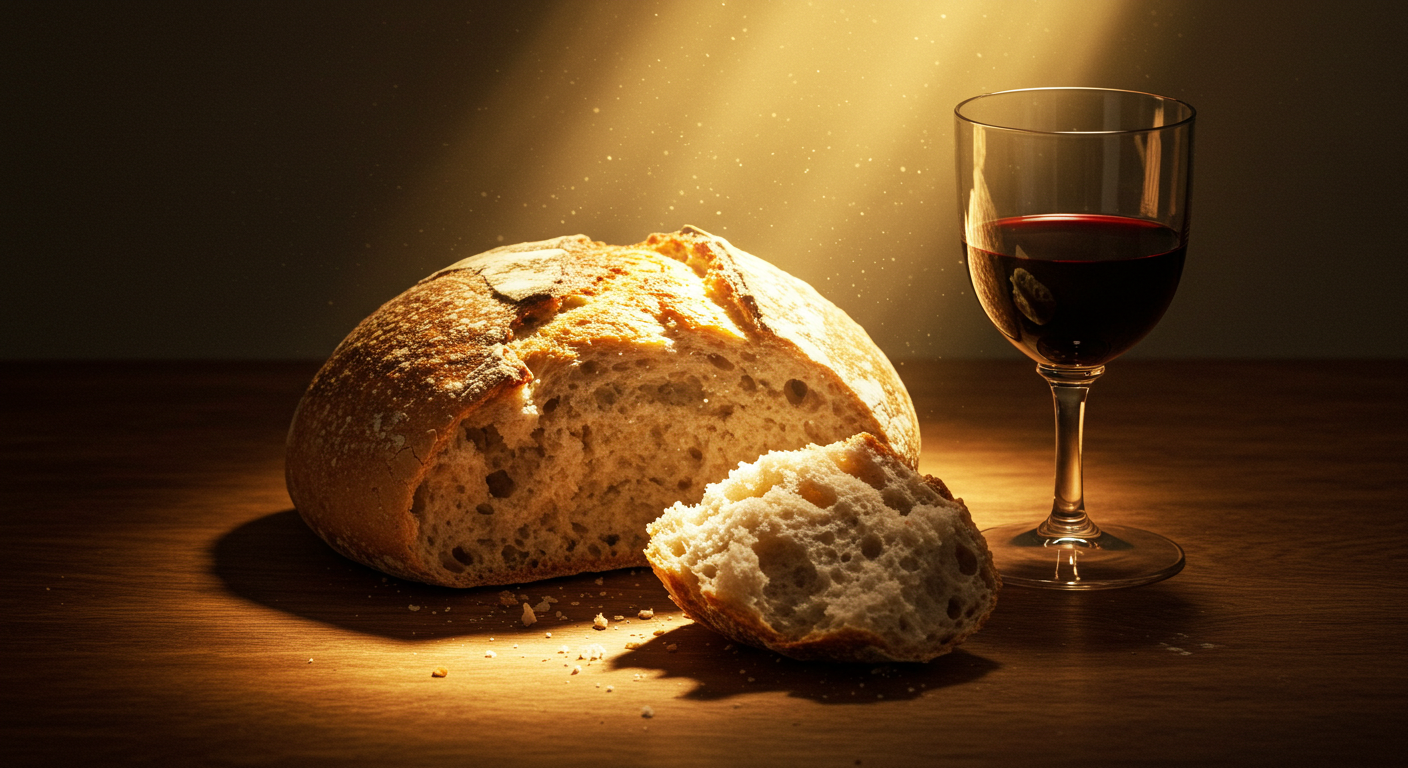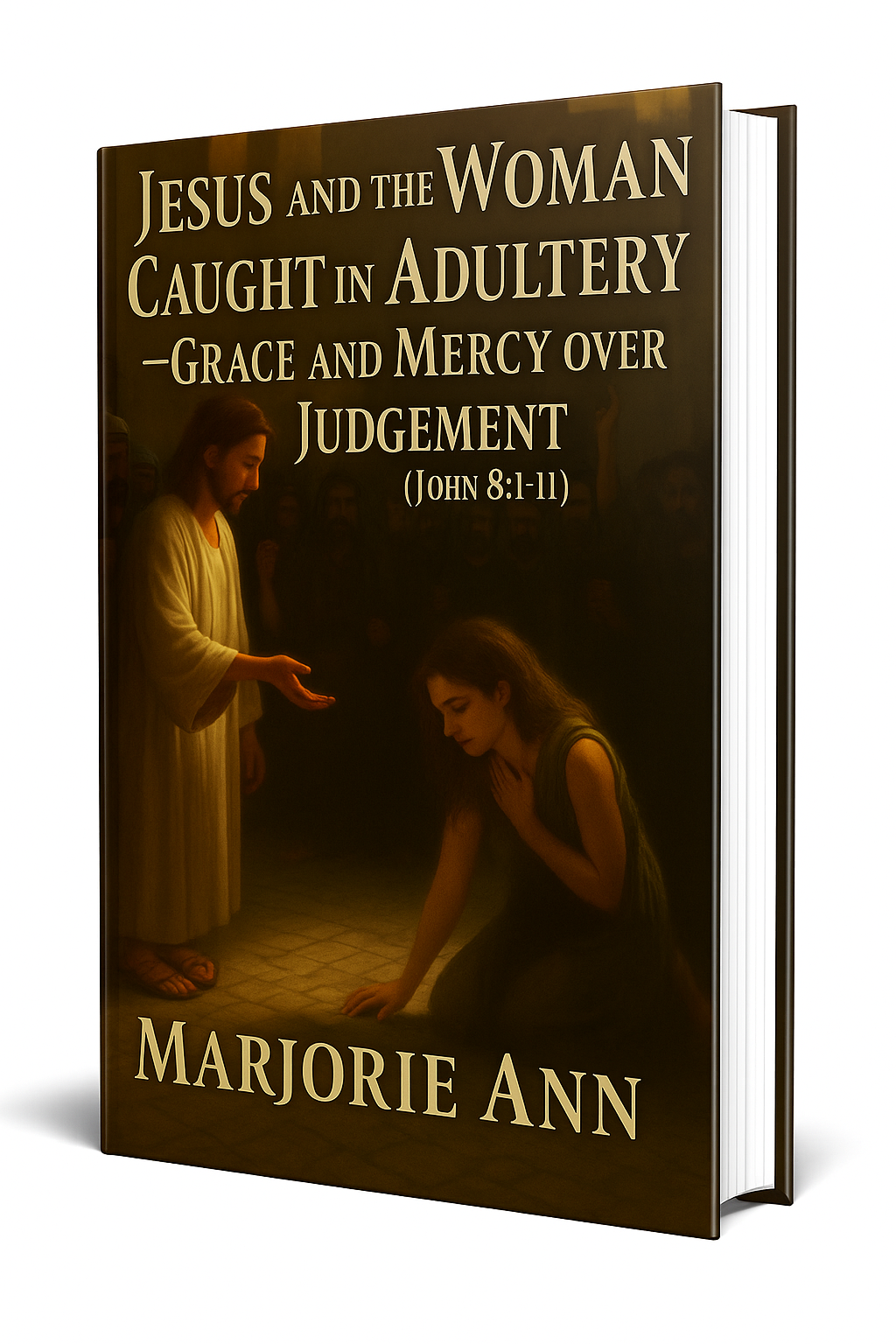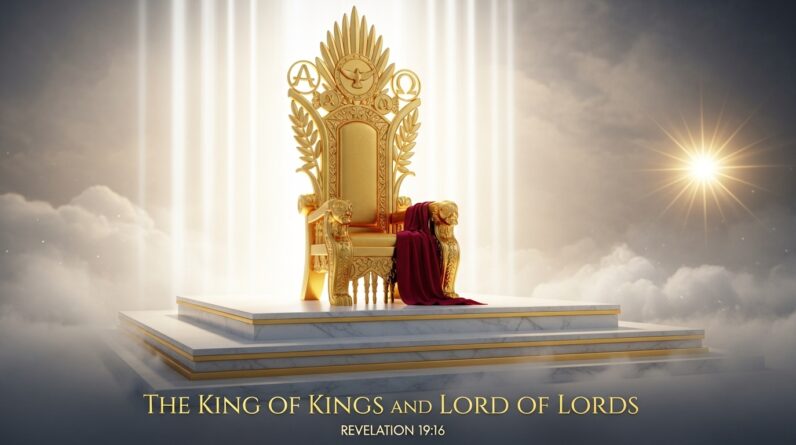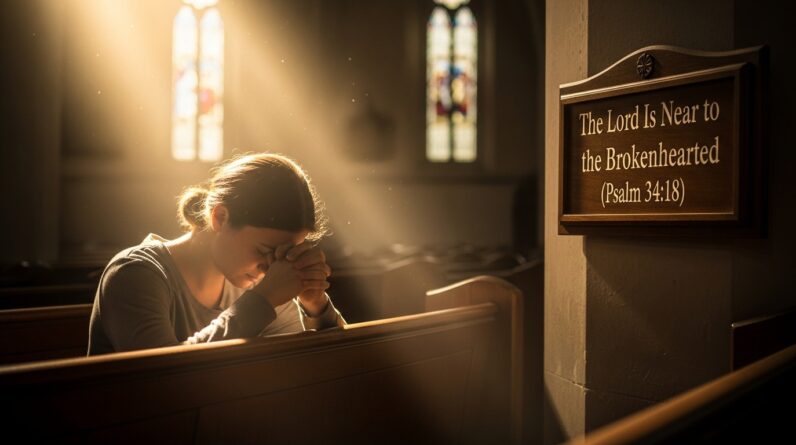Bread Broken, Lives Restored — A Word to Your Heart
You may have sat at a communion table and felt a hush fall over the room as the bread was passed. Maybe you wondered why a simple piece of bread could stir something deep in your soul. “Bread Broken, Lives Restored” is a phrase that captures the mystery and mercy of what happens when you remember Christ through the Lord’s Supper. This article will walk with you through Luke 22:19 and other Scriptures so you can see how the broken bread points to healing, restoration, and unity in the body of Christ. You’ll be invited not only to understand the symbols but to receive what Christ intends for your life. The simplicity of the supper hides a profound promise: in the brokenness of Jesus, your broken life can be restored.
The Moment at the Upper Room: Luke 22:19
You can almost feel the tension of that night—the disciples gathered, hearts heavy, the shadow of betrayal looming. In that solemn hour, Jesus took bread, gave thanks, broke it, and said, “This is my body given for you; do this in remembrance of me.” Read the passage for yourself and let its words sink in: Luke 22:19. When Jesus broke bread, He was not concluding a meal; He was revealing the way salvation and restoration come: through His broken body.
The Act of Breaking Bread: What It Signified Then
When Jesus broke the bread, He was doing something ordinary with extraordinary meaning. You should notice that the breaking was public and intentional—a visible symbol of the cost He would bear on the cross. The act told the disciples that suffering and sacrifice were not accidents but the very means by which God would bring redemption. In that simple act, you are invited to see the gospel: healing and reconciliation spring from sacrifice. Let the image of the broken bread remind you that your wounds are not the last word.
Theological Foundation: Atonement and Substitution
The Lord’s Supper points you to the heart of the gospel—Christ’s atoning death. Scripture shows that He bore your sins and by His wounds you are healed. Consider these foundational texts: Isaiah 53:5 and 1 Peter 2:24. In them, you find the truth that Jesus’ physical suffering was not only penal for sin but also restorative in a cosmic sense. When the bread is broken, you remember that substitutionary love touched the very core of your need.
Bread Broken, Lives Restored: Healing and Restoration
You might wonder how a memorial could bring healing. The connection is both symbolic and spiritual. The Lord’s Supper is a tangible proclamation that Christ’s broken body was the means of reconciling you to God, to others, and to the purpose for which you were created. Look to Psalm 147:3, which assures you that God heals the brokenhearted. The broken bread symbolizes a broken Savior who binds your wounds. By coming to the table, you acknowledge your need and receive by faith the restorative effects of Christ’s sacrifice.
The Words of Institution: Remembering with Purpose
When Jesus said, “Do this in remembrance of me,” He was asking for more than a mental recollection. He intended remembrance to be a spiritual act of encounter—you remember, and in remembering, you participate. Read the fuller instruction preserved for you in 1 Corinthians 11:23-26. As you take the bread, you proclaim the Lord’s death until He comes. That proclamation is not mere ritual; it is a living testimony that the broken body of Christ is the fountain of life and restoration in your world.
Communion as an Act of Faith
Every time you approach the Lord’s Table, you approach by faith. You believe that the bread speaks of Christ’s body, that His brokenness accomplished what you cannot accomplish for yourself. In the same way, the cup speaks of the new covenant—His blood poured out for the forgiveness of sins. Luke 22:20 pairs with the bread to underscore the completeness of Christ’s sacrifice. You do not come as one who has everything together but as one who depends on grace. Your faith in the exchange—His brokenness for your wholeness—activates the promise of restoration.
Union with Christ: The Deeper Meaning of the Supper
The Lord’s Supper is not only a memorial; it is a sign of your union with Christ. Jesus said, “I am the bread of life” in John 6:35 and “unless you eat the flesh of the Son of Man… you have no life in you” in John 6:53. These hard sayings point to the mysterious but real union that the Lord’s Supper celebrates. When you partake, you participate in the life of Christ; His death and resurrection become yours by faith. That union is the ground for restoration—your identity is remade around His death and resurrection.

Bread Broken, Lives Restored: Personal Application
How does this translate to your everyday life? First, it calls you to honest self-examination. Paul warns the Corinthians to examine themselves before eating in 1 Corinthians 11:28-29. You should not approach casually. Confess the sins that separate you, and receive forgiveness. Second, it invites you to surrender your wounds. Bring the broken places of your life to the table—they are exactly what Christ intended to heal. Third, it challenges you to live out the restoration you receive: forgive others, reconcile, and serve in humility.
Communion and Community: Unity in the Body
Communion is communal. When you take the bread, you declare your belonging to the body of Christ. The supper binds you to brothers and sisters across time and space. The Bible says Christ is working to reconcile all things in Himself; note Ephesians 2:14-16 and Colossians 1:20-22. The broken body of Jesus becomes a source of unity, tearing down walls of hostility. So when you partake, remember those with whom you are united, and let the table move you toward reconciliation and love.
The Lord’s Supper and Physical Healing
Scripture connects the work of Christ with our healing. Isaiah 53:5 speaks of wounds and healing; 1 Peter 2:24 affirms that by His wounds you were healed. These verses do not promise a magic formula, but they point you to the sure ground that Christ’s suffering made healing possible—spiritual, emotional, and often physical. When you come to the table, you bring your ailments, your anxieties, your broken relationships, and you place them before the One who bore the cost of restoration. Sometimes healing happens instantly; other times it unfolds in the patient’s work of grace. In every case, the supper anchors your hope in Christ’s finished work.
The Supper as a School of Remembrance
You should think of the Lord’s Supper as a weekly or regular school where you rehearse the gospel. Jesus instituted it so you would not forget what He did. Regular remembrance shapes your heart: gratitude grows, pride diminishes, and hope is renewed. Luke 22:19 reminds you to “do this in remembrance of me.” The practice trains you to keep your eyes on Jesus instead of your failures. The result is spiritual formation: you become more compassionate, more truthful, and more faithful to Christ’s mission.
How to Approach the Table: Practical Steps
When you come to the Lord’s Table, do so with thoughtful preparation. Consider these simple steps to help you receive the supper as God intends:
- Confess and repent of the sins that hinder fellowship with God and others.
- Remember the gospel: His body broken, His blood shed.
- Believe by faith the promises of Scripture as you eat and drink.
- Offer yourself anew in service and love to God and neighbor.
These steps are not legalistic rituals; they are pathways into the grace that the broken bread pictures. They help you connect the symbol with the reality—the living Christ whose brokenness brings life.
Bread Broken, Lives Restored: Stories of Grace
You may be comforted to hear how the supper has brought restoration in the lives of ordinary people. In small churches and large, men and women have come to communion with heavy hearts—broken marriages, illness, addiction, and despair—and left with a renewed sense of forgiveness and hope. While you should not expect a dramatic feel-good moment every time, many testify that communion catalyzed reconciliation, awakened faith, and brought peace. These testimonies remind you that the Lord’s Supper is not merely a memory but a means through which God meets His people.
Dealing with Doubt and Pain
If you struggle with doubt or pain, the supper is for you. Doubt often isolates you and tells you that God cannot or will not restore. Yet the picture of a Savior who was broken for you answers that voice. Consider Romans 5:8: while you were still a sinner, Christ died for you. Your pain is real and known to God; the supper invites you to bring that reality to the cross. Don’t let doubts keep you from the table. Instead, use the supper as a means to bring your questions and wounds before the Lord who meets you there.
The Ethics of the Table: Living Out Restoration
True restoration affects how you live with others. The bread that was broken calls you to be a peacemaker, a reconciler, and a servant. Christ’s sacrifice sets the pattern for your relationships. Matthew 5:23-24 urges that reconciliation with a brother or sister takes precedence over worship. When you eat of the broken bread, let it propel you toward mending relationships, forgiving offenses, and practicing humility. The communal nature of the supper makes you accountable to live the gospel visibly in your life.
Bread Broken, Lives Restored: A Call to Holiness
The Lord’s Supper should spur you to holiness because it lays bare the cost of your redemption. You cannot look on the broken body of Christ and continue in willful sin without conviction. The supper’s remembrance of Christ’s suffering encourages you to pursue purity of heart and life. Hebrews 12:1-2 invites you to fix your eyes on Jesus, the author and perfecter of faith. In doing so, your life increasingly reflects His grace and truth.
Common Questions: Who Should Receive Communion?
You may ask, “Am I worthy?” The honest answer is that none of us is worthy apart from Christ. The Bible calls each of us to examine ourselves before partaking, to confess, and to come in faith. 1 Corinthians 11:27-29 warns against taking the supper in an unworthy manner. If you are in doubt about your standing before God, take time to repent and seek reconciliation. If you are a believer trusting in Christ, the table is a welcome refuge. If you are not yet a follower of Jesus, use the supper as an invitation—come to Christ, receive Him, and then participate in the feast.
Bread Broken, Lives Restored: The Eschatological Hope
The Lord’s Supper looks backward to the cross and forward to the wedding feast of the Lamb. Jesus said He would not eat the Passover again until it is fulfilled in the kingdom of God, pointing you to future fulfillment. See Matthew 26:29 and 1 Corinthians 11:26. When you take the bread you proclaim the Lord’s death until He comes. That future hope gives you courage: your present restoration is a foretaste of the final, consummate restoration when Christ returns and makes all things new.
Pastoral Encouragement: Come as You Are
If you are carrying shame, grief, or failure, hear this pastoral word: Jesus invites you to the table just as you are, yet not leaving you as you are. The supper is for the broken-hearted and for the humble. Come with honesty and expect mercy. The broken bread tells you that the Savior knows suffering and enters into it. In Him, your wounds can become pathways for grace. You are welcome to come, receive, and be changed.
Practical Suggestions for Churches
For pastors and church leaders, the practice of communion should be handled with reverence and pastoral care. Encourage preparation through Scripture reading and confession. Provide explanations for those who are unfamiliar, and create space for testimonies of restoration when appropriate. Make sure the table invites unity, not division. Communion can be a powerful instrument to foster reconciliation, healing ministries, and outreach. Keep the supper accessible, regular, and centered on the gospel so that the truth “Bread Broken, Lives Restored” informs the life of your congregation.
Bread Broken, Lives Restored: The Call to Share the Story
You are called to be a witness. The Lord’s Supper sends you out to live and tell the story of what Christ’s broken body has done. Share the gospel with gentleness and clarity. Let your testimony of restoration be a light to others who sit in darkness. The broken bread compels you to compassion, evangelism, and discipleship. When the world sees a people marked by restored lives, humility, and love, they will see the reality of the gospel.
Frequently Asked Questions — Quick Answers
You may still have questions about the Lord’s Supper. Here are brief answers to common concerns:
- Is communion a sacrament or a memorial? It is both a sign and a means—the visible sign of an invisible grace, a memorial that is also sacramental in its spiritual reality.
- Can non-Christians take communion? The Bible calls for self-examination and faith. If you’re not yet a believer, come to Christ first; the table is a feast for His followers.
- Does communion guarantee physical healing? The supper points to Christ’s saving and restorative work. While healing may come, the promise of healing is part of the larger promise of redemption—ultimately fulfilled in Christ’s return.
These concise answers are meant to encourage you to seek more pastoral guidance and scriptural study.
Living the Communion Life Daily
The Lord’s Supper should shape your daily walk. Even when you are not at a table, let the memory of the broken bread influence how you live: be generous to the poor, patient with those who hurt you, and faithful in prayer. Practice daily remembrance in short prayers, thanksgiving, and acts of service. Let the truth you receive in the supper become the air you breathe. When life brings trials, recall the bread broken and the promise of restoration—this will steady your soul.
Bread Broken, Lives Restored: Final Exhortation
If you will let it, the Lord’s Supper will transform you. The broken bread is a reminder, a promise, and a call: remember what Christ did, receive His grace by faith, and live as a restored person sent to restore others. Take courage today. Bring your wounds, your hurts, your doubts, and your hopes to the table. Let Christ’s broken body be the place where you find wholeness. The words from Luke 22:19 will remain a clarion call across ages—do this in remembrance of Him. In remembering, you find restoration.
Explore More
For further reading and encouragement, check out these posts:
👉 7 Bible Verses About Faith in Hard Times
👉 Job’s Faith: What We Can Learn From His Trials
👉 How To Trust God When Everything Falls Apart
👉 Why God Allows Suffering – A Biblical Perspective
👉 Faith Over Fear: How To Stand Strong In Uncertain Seasons
👉 How To Encourage Someone Struggling With Their Faith
👉 5 Prayers for Strength When You’re Feeling Weak

📘 Jesus and the Woman Caught in Adultery – Grace and Mercy Over Judgement
A powerful retelling of John 8:1-11. This book brings to life the depth of forgiveness, mercy, and God’s unwavering love.
👉 Check it now on Amazon
As a ClickBank & Amazon Affiliate, I earn from qualifying purchases.
Acknowledgment: All Bible verses referenced in this article were accessed via Bible Gateway (or Bible Hub).
“Want to explore more? Check out our latest post on Why Jesus? and discover the life-changing truth of the Gospel!”








